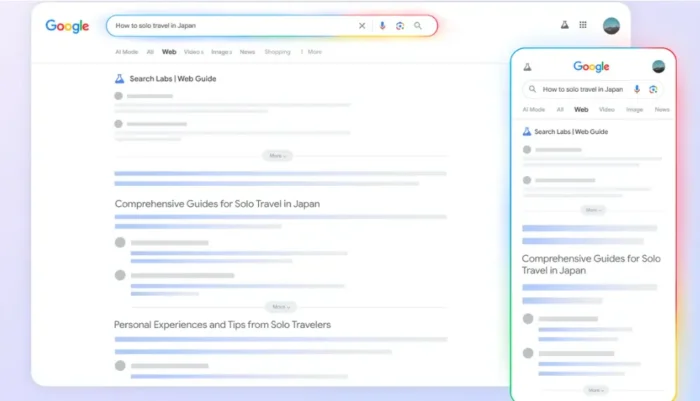The Perspective Shift That Helped Me Overcome My Perfectionism
“Perfectionism is the exhausting state of pretending to know it all and have it all together, all the time. I’d rather be a happy mess than an anxious stress case who’s always trying to hide my flaws and mistakes.”...


“Perfectionism is the exhausting state of pretending to know it all and have it all together, all the time. I’d rather be a happy mess than an anxious stress case who’s always trying to hide my flaws and mistakes.” ~Lori Deschene
When I got my start as a math teacher, it was 2012, and I had not been in a classroom in over ten years. I really wasn’t sure how teaching got done anymore.
I came into my first class with a piece of paper and many examples to share. I got up and started writing the examples on the board for my students. When I looked at the board after my lesson, what stood out to me was that my handwriting was sloppy. It looked like a third grader wrote it.
I also noticed that many students laughed during my lessons, so, determined to find the cause of the laughter, I started to look at other teachers to see if I could come up with any ideas to improve my lessons.
What stood out to me is that almost every teacher in the school was using some kind of multimedia display, and I was just writing with a marker. So, at that point, I decided to make a change to create all my lessons on multimedia.
I spent considerable time and effort typing the examples before my lessons so I would not have to display my messy handwriting for all to see. I was very proud about how clear and easily readable my multimedia presentations were.
Three years passed, and I was at a new job. About a month went by, and I was sure that I was impressing everyone with my beautiful multimedia lessons. But one day my manager brought me in and said that there was overwhelming consensus amongst my students and their families that I should handwrite my examples.
Upon hearing this, my heart sank. In my mind, I was “tech savvy” and in control when I taught. With this new mandate, I was going to become the low-tech teacher who wrote like a third grader and had black marker ink all over his hands.
During this time, I could not sleep very well. I also spent time searching online to see if there were other non-teaching jobs that I was qualified for. I couldn’t get the picture out of my mind of that whiteboard from 2012. I could just see how sloppy it looked, and I could hear the laughter of those students.
As I started to make the requested changes to my teaching, not only was I uncomfortable, but I didn’t believe my students would want to learn from someone who had such sloppy handwriting. As time went on, I began to realize that handwriting the calculations made me much more nervous than just displaying them. I very often made mistakes and then had to erase and fix them.
After a few weeks’ time, a light bulb went off inside me. If I, the experienced and degreed teacher, got nervous and made mistakes during my teaching, then how much more likely would it be that my students would make the same mistakes?
I decided to change the tone of my teaching to not just handwrite the examples but to also explain my thinking process. I could tell the students exactly where they were likely to make errors during their work. Since I was working through problems and making myself vulnerable in the same way my students were expected to, we all had more of a common connection.
My overall confidence as an instructor rose. I became more authoritative as a teacher. I wasn’t just the reader of the lesson; I was the author. Students didn’t ask anymore how our books define concepts; they asked me directly how I defined them.
Today, nearly twelve years later, I still handwrite my examples live in the room with my students. At the end of a recent lesson, I looked at the board. My handwriting is still rather sloppy, but I just don’t pay attention to that anymore. Instead, I see effort, thought, expertise, and willingness to put myself in the shoes of my students.
At the beginning of my teaching career, I was so fixated on one of my bad qualities that I went to great efforts to try to hide it. In turn, that blinded me to a multitude of other good qualities.
How many relationships and marriages end because the only thing we can see in our partner is their ‘sloppy handwriting’? How much depression is there in this world because when we think about ourselves, the only thing we see is some bad quality?
In truth, if we took the time to catalog a list of our good qualities, we’d likely see they far outweigh the bad. So often we just can’t see these qualities because we tend to focus exclusively on our negative qualities and our mistakes. We think that is all that we are. We want to destroy our bad qualities in the same way I almost destroyed my teaching career by quitting it.
I recommend taking a small piece of paper and writing down all your good qualities and the good things that you do. Carry this paper with you everywhere you go. Take time throughout the day to read this list and add to it. Any time you think of or worry about one of your negative qualities, bring the list out. You will soon find that the truth is easier to see.
Our list of bad qualities is a short list. Our list of good qualities is a long list. With some training, we can learn to recognize when we are focusing exclusively on the short list. Then we can change our focus to the long list. When we get this true and properly balanced picture of our lives, they flow much more smoothly.
When we don’t focus on or worry about the bad qualities on our short list, we are free to reinvent them for our own purposes.
On one occasion, I was working with a group of students, and one student was picking on another about his bad handwriting. I ran over to stop this potential bullying. I observed his handwriting, and it was true this student had lousy handwriting. Without any forethought, I said, “Well, doctors are known for having bad handwriting, so it’s really a sign of intelligence.”
That student really appreciated my insight. Then I looked at him and said, “See, we both have something in common. We write like doctors.”
It’s very possible to take things from our short list of bad qualities and move them to our long list of good qualities. Sometimes we just need a different way of looking at things.
![]()
About Wayne Simmons
Wayne is a licensed teacher who has spent 15 years traveling the world. After transforming his own life through learning Buddhist principles, he has pivoted to supporting and assisting those who are struggling with anxiety, depression, and work-related burn out. For daily inspiration follow him at x.com/dhammagia.
See a typo or inaccuracy? Please contact us so we can fix it!

 Astrong
Astrong 























.jpg&h=630&w=1200&q=100&v=f776164e2b&c=1)








